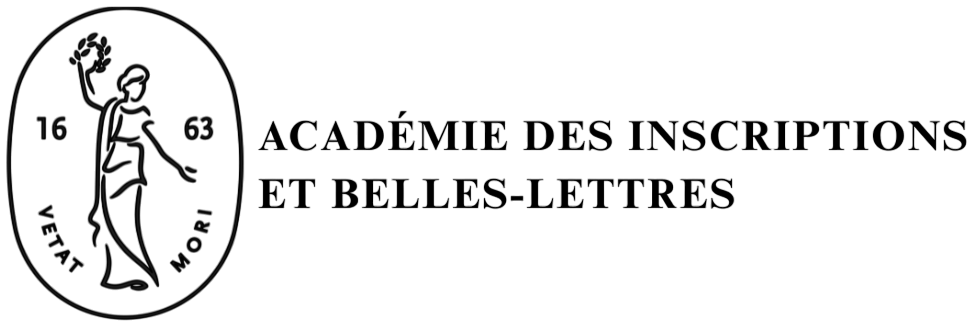Séances Séance du 20 décembre 2019
– Note d’information de M. François-Xavier Dillmann, correspondant français de l’Académie : « Une acquisition récente de la Bibliothèque royale de Stockholm » . « Les annotations de l’archevêque Olaus Magnus dans un exemplaire des Gesta Danorum de Saxo Grammaticus. À propos d’une acquisition récente de la Bibliothèque royale de Stockholm ».
– Communication de M. Pierfrancesco Callieri, professeur à l’Université de Bologne, et M. Alireza Askari Chaverdi, professeur associé à l’Université de Shiraz (Iran), directeurs de la mission irano-italienne de Persépolis, sous le patronage de M. Henri-Paul FRANCFORT : « Dernières recherches sur le site proto-achéménide de Tol-e Ajori (Fars, Iran) ».
Résumé : Le monument de Tol-e Ajori, situé à 3,5 km à l’ouest de Persépolis dans la province iranienne du Fars, attire depuis quelques années l’attention des chercheurs du monde entier pour son caractère exceptionnel. Le projet est arrivé à l’automne 2018 à la fin des fouilles prévues, limitées à environ la moitié de la surface totale. Les conséquences de l’embargo occidental sur les relations économiques et commerciales avec la République islamique d’Iran ont conduit, en raison de la crise économique, à l’arrêt de la plupart des initiatives les plus coûteuses dans le domaine de la conservation des biens culturels, y compris la construction d’une toiture permanente, condition indispensable de la présentation et de la mise en valeur des vestiges architecturaux mis au jour à Tol-e Ajori. Pourtant, l’inachèvement de la phase préparatoire de présentation muséale n’a pas empêché la poursuite de l’étude en vue de la publication du rapport final des fouilles. Celle-ci comporte la définition d’une chronologie du site fondée sur la corrélation entre les différentes phases de la stratigraphie de chaque tranchée. La compréhension de la nature et de la fonction de ce bâtiment monumental ont progressé et il est aujourd’hui possible de confirmer son interprétation comme une porte monumentale, bâtie selon une tradition mésopotamienne et élamite, en briques crues et briques cuites, avec une face extérieure décorée en briques glaçurées. Le plan du bâtiment a été identifié comme une copie en grandes dimensions de la Porte d’Ishtar de Babylone. Les motifs décoratifs et figuratifs répètent avec fidélité ceux de Babylone, aujourd’hui visibles à Berlin au Pergamonmuseum, avec des panneaux représentant des animaux fantastiques, tels que le taureau ou encore le dragon-serpent mésopotamien mushkhushshu ; ce dernier n’ayant jusqu’ici jamais été observé dans l’art connu des Achéménides. Bien que l’on manque de données décisives pour une définition précise de sa chronologie, il est aujourd’hui de plus en plus acceptable de dater cette Porte avant le début de la construction de la Terrasse de Persépolis.
Mots-clés : Iran, Fars, achéménide, Babylone, briques
Abstract : The Tol-e Ajori monument, 3.5 km west of Persepolis in the Iranian province of Fars, which in recent years has attracted the attention of researchers from all over the world for its exceptional character, arrived in autumn 2018 at the end of the first phase of the activity, that of the planned excavations, limited to about half of the total surface of the monument. Unfortunately, the consequences of the Western embargo on economic and trade relations with the Islamic Republic of Iran have led, due to the economic crisis, to the discontinuation of most of the most costly initiatives in the field of cultural property, including the construction of the permanent roof over the site of Tol-e Ajori, a fundamental condition for the exhibition, conservation and museumization of the architectural remains uncovered there.However, the unfinished preparation phase for the museum did not prevent the study from continuing with a view to publishing the final excavation report, which included the definition of a periodization of the site based on the correlation between the different phases in which the stratigraphy of each trench had been temporarily divided.The understanding of the nature and function of this building has improved and it is now possible to confirm its interpretation as a monumental gate built in accordance with a Mesopotamian and Elamite tradition, in mud- and baked bricks, with an external face decorated with glazed bricks. The plan of the building has been identified as a copy in major dimensions of the Babylonian Ishtar Gate. The decorative and figurative motifs faithfully repeat those of Babylon, now visible at the Pergamonmuseum in Berlin, with panels depicting fantastic animals, such as the bull or the mushkhushshu Mesopotamian snake dragon, the latter having never before been observed in the art known to the Achaemenids. Although there is a lack of decisive data for a precise definition of its chronology, it is now more and more acceptable to date the Gate before the start of the construction of the Persepolis Terrace.
Keywords : Iran, Fars, Achaemenid, Babylon, Bricks

